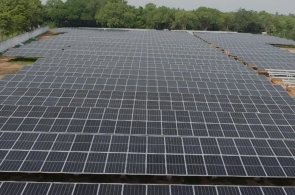
What is the Solar farm?
A solar farm is a large-scale installation of solar panels that converts sunlight into electricity. They play a vital role in reducing carbon emissions and promoting sustainability.
How does a Solar farm work?
Solar farms utilize solar panel arrays on open land, where photovoltaic cells convert sunlight into electricity via the photovoltaic effect. Inverters then transform this electricity from direct current (DC) to alternating current (AC), making it suitable for distribution through the electrical grid
FAQ
What is the lifespan of a solar farm?
Solar farms have a lifespan of 25 years or more with proper maintenance, providing long-term renewable energy solutions.
How much land is needed for a solar farm?
The amount of land required for a solar farm varies depending on factors such as the size of the installation and the efficiency of the solar panels. Generally, solar farms can range from a few acres to hundreds of acres in size.
Can solar farms be installed on different types of land?
Yes, solar farms can be installed on various types of land, including unused or marginal land, agricultural land, former industrial sites, and even rooftops, maximizing land use efficiency and minimizing environmental impact.
How do solar farms impact property values?
Solar farms can increase property values by providing stable income opportunities for landowners and enhancing community sustainability.
How do solar farms contribute to renewable energy?
Solar farms harness sunlight to generate clean and renewable electricity, reducing reliance on fossil fuels and mitigating climate change.
Powering Progress with Solar Farms!
Join the renewable energy revolution by investing in a solar farm

